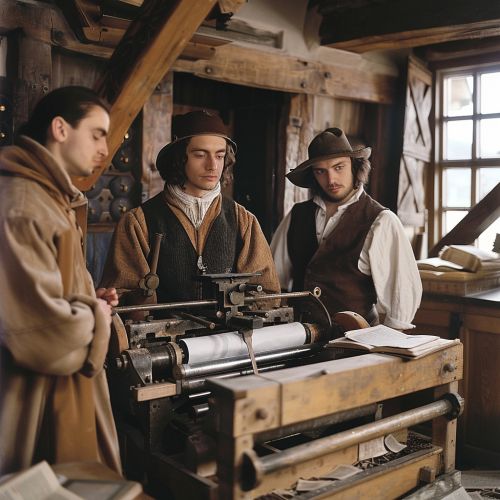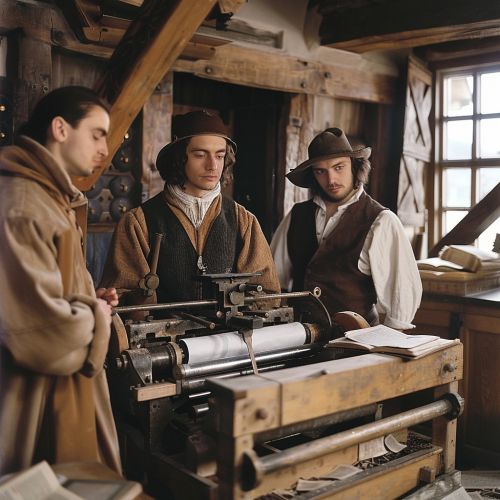History of the printing press
Introduction
The history of the printing press is a fascinating journey that spans centuries and has had a profound impact on the dissemination of knowledge, culture, and information. This article delves into the origins, development, and influence of the printing press, providing a comprehensive and detailed exploration of its evolution.
Early Printing Techniques
Before the advent of the printing press, various methods of reproducing text and images were employed. These early techniques laid the groundwork for the development of more sophisticated printing technologies.
Woodblock Printing
Woodblock printing, also known as xylography, is one of the earliest known methods of printing. Originating in China during the Tang Dynasty (618–907 AD), this technique involved carving an image or text into a wooden block, inking the block, and then pressing it onto paper or fabric. Woodblock printing was used extensively for religious texts, artworks, and eventually for the production of books.
Movable Type
The invention of movable type is often credited to Bi Sheng, a Chinese inventor who lived during the Song Dynasty (960–1279 AD). Movable type involved creating individual characters from clay, which could be arranged to form words and sentences. This method allowed for greater flexibility and efficiency in printing compared to woodblock printing. However, it was not until the 15th century that movable type printing would reach its full potential in Europe.
The Gutenberg Revolution
The most significant milestone in the history of the printing press is the invention of the mechanical movable type printing press by Johannes Gutenberg in the mid-15th century. Gutenberg's innovation revolutionized the production of books and the spread of knowledge.
Johannes Gutenberg
Johannes Gutenberg, a German blacksmith, goldsmith, printer, and publisher, is often credited with the invention of the printing press around 1440. Gutenberg's press utilized movable metal type, which allowed for the mass production of books and other printed materials. His most famous work, the Gutenberg Bible, was printed in 1455 and is considered a masterpiece of typography and design.


Impact on Society
The introduction of the printing press had a profound impact on society. It facilitated the rapid dissemination of knowledge, making books more accessible and affordable. This democratization of information contributed to the spread of literacy, the Reformation, and the Renaissance. The printing press also played a crucial role in the scientific revolution by enabling the widespread distribution of scientific works and discoveries.
Technological Advancements
Following Gutenberg's invention, the printing press underwent numerous technological advancements that improved its efficiency, speed, and quality.
The Screw Press
The screw press, an early form of the printing press, utilized a screw mechanism to apply pressure to the printing plate. This design allowed for greater control and consistency in the printing process. The screw press remained the dominant printing technology for several centuries.
The Steam-Powered Press
The Industrial Revolution brought significant advancements to printing technology. In the early 19th century, the steam-powered press was introduced, dramatically increasing the speed and volume of printed materials. This innovation enabled the mass production of newspapers, books, and other printed media, further expanding access to information.
The Rotary Press
The rotary press, invented by Richard March Hoe in 1843, revolutionized the printing industry by allowing continuous printing on a roll of paper. This technology significantly increased printing speeds and efficiency, making it possible to produce large quantities of printed materials quickly and cost-effectively.
The Printing Press in the Modern Era
The 20th and 21st centuries have seen continued advancements in printing technology, with the development of digital printing and other innovations.
Offset Printing
Offset printing, developed in the early 20th century, involves transferring an inked image from a plate to a rubber blanket and then onto the printing surface. This method provides high-quality prints and is widely used for printing books, newspapers, and packaging materials.
Digital Printing
Digital printing, which emerged in the late 20th century, uses digital files to directly print images and text onto various media. This technology offers greater flexibility, shorter turnaround times, and the ability to print on demand. Digital printing has become increasingly popular for small print runs, personalized materials, and complex designs.
Cultural and Intellectual Impact
The printing press has had a lasting impact on culture, education, and intellectual life. Its influence can be seen in various aspects of society.
The Spread of Literacy
The printing press played a crucial role in increasing literacy rates by making books more affordable and accessible. As more people learned to read, the demand for printed materials grew, leading to the proliferation of literature, newspapers, and educational texts.
The Reformation
The printing press was instrumental in the spread of the Reformation, a religious movement that challenged the authority of the Catholic Church. Martin Luther's Ninety-Five Theses, which criticized church practices, were widely distributed thanks to the printing press, sparking religious debates and leading to significant changes in European Christianity.
The Renaissance
The Renaissance, a period of renewed interest in art, science, and classical knowledge, was greatly influenced by the printing press. The ability to reproduce and distribute ancient texts and new works of art and science facilitated the exchange of ideas and contributed to the intellectual and cultural flourishing of the period.
Conclusion
The history of the printing press is a testament to human ingenuity and the desire to share knowledge. From its early beginnings with woodblock printing to the digital age, the printing press has continually evolved, shaping the way we communicate and access information. Its impact on society, culture, and intellectual life is immeasurable, and it remains a cornerstone of modern civilization.
